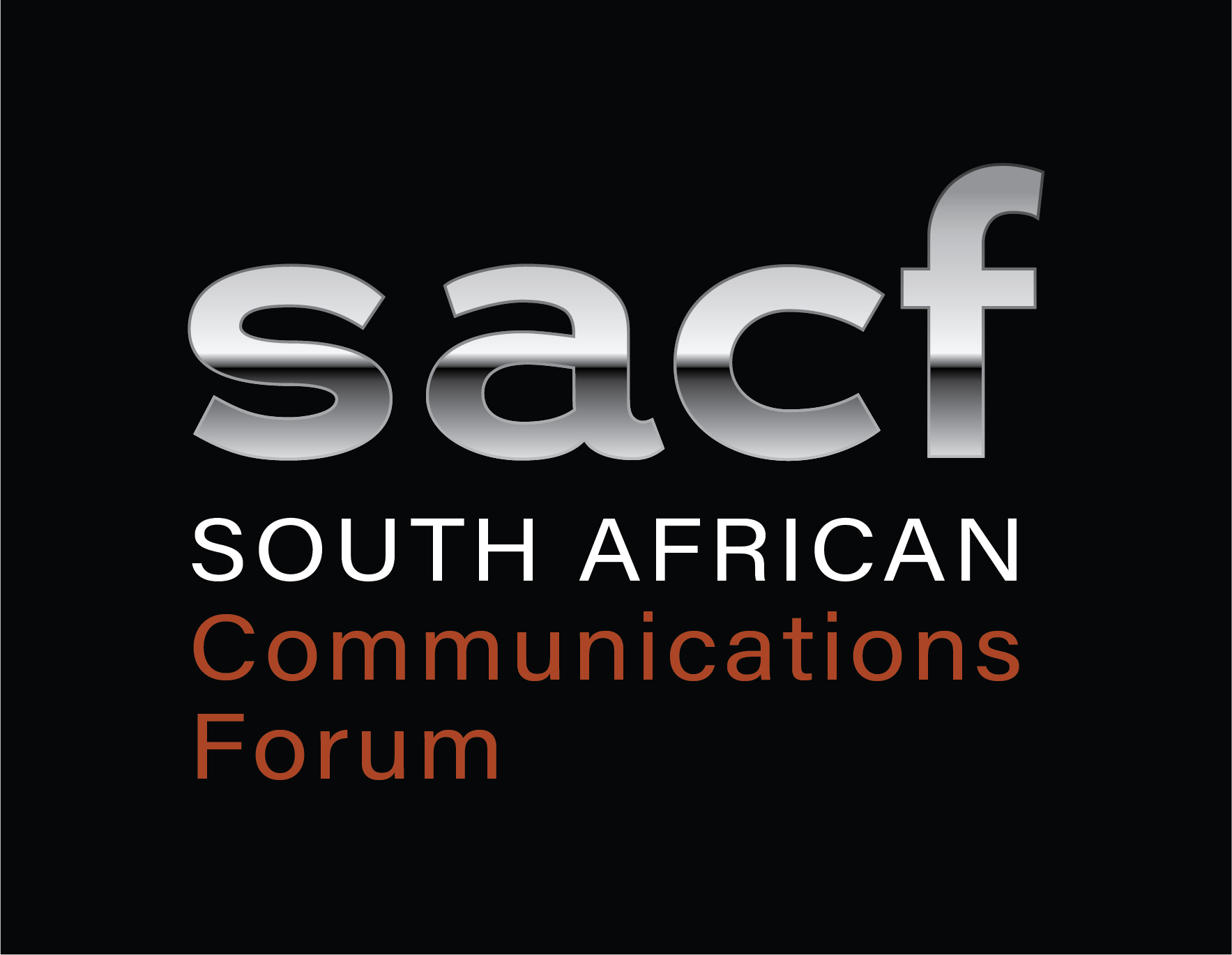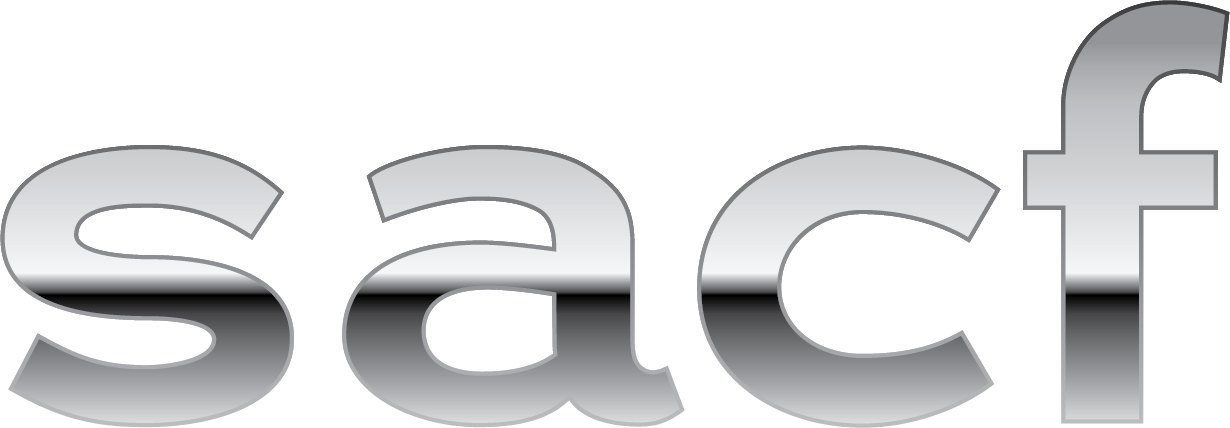The ICT Sector
The ICT Sector
The South African ICT sector consists of several sub-sectors While SACF’s members come from all subsectors, there is a strong focus on the telecommunications subsector.
Formed in 2001, the SACF replaced the then African Telecommunications Forum (ATF), founded in 1993. The new forum was established to adequately meet the representative needs of its members in a sector that saw emerging technologies transform both the ICT business and regulatory landscape.
Since inception, the SACF has strived to be a unified voice, advocating for the growth, development and transformation of the sector, on behalf of its members.
The SACF represents a broad group of stakeholders in the telecommunication and information technology Industries.
South Africa has an active mobile market eager for new and better innovations. This has surpassed market expectations since the first two licences were granted in 1993.
The dominant operators are Vodacom and MTN with Cell C and Telkom Mobile following. All are increasingly forced to find innovative ways of distinguishing themselves from competitors to gain and retain customers, as they deal with the presence of disruptive services and the migration of their core business from voice to data.
Mobile penetration in South Africa stands at 84 percent.
Considerable investments have been made over the decades by the likes of Telkom, Liquid Telecom South Africa (previously Neotel), and Broadband Infraco; giving South Africa the most extensive fixed network infrastructure on the continent. This has been supplemented in recent years by the expansion of fibre networks in the larger metropolitan areas providing a measure of competitiveness. The cost of the fibre remains a burning point and the cost still remains relatively high.
Competition in fibre network rollouts in South Africa was initiated by the 2005 High Court ruling that ended Telkom’s infrastructure monopoly and allowed mobile operators and value-added service providers to build their own networks. Competition in the fibre-to-the-home (FTTH) market intensified in 2014, following the appointment of Vumatel to lay fibre in Parkhurst, which subsequently led to a stampede to lay fibre in all the other metros. Since Vumatel’s success, the number of competitors in the infrastructure market has risen to 35. Other than Vumatel, main players in the FTTH market include mobile operators, MTN; Vodacom; and Openserve, which together owns 80 percent of the market. (SOURCE: After-access-south-africa-state-of-ict-2017-south-africa-report)
Although the copper fixed-line market is dwindling, the FTTH market is expanding rapidly, with many of the more affluent areas of the major cities covered by companies such Vumatel, Fibrehoods, Frogfoot and Octotel. The remaining retail broadband market is driven by the mobile operators who continue to reap the benefits.
For the period up to April 2009, Telkom had a full monopoly on submarine cables into South Africa and was able to charge excessively high rates on international bandwidth out of South Africa. However, at that time, Telkom only sold the half circuit between South Africa and Europe, and one of the other international consortium members would have to sell the other half circuit into Europe. Since the end of the exclusivity period, other owners such as BT and Neotel have now been able to sell full end-to-end circuits on SAT-3 and SAFE. Since 2009, a number of new cables have been laid around Africa on both the East and West coasts, and today there are six submarine cables that connect SA to the rest of the world. This has resulted in a massive reduction in prices for bandwidth, and has boosted the demand very significantly for international connectivity. (SOURCE: After-access-south-africa-state-of-ict-2017-south-africa-report)
The ICT Sector
The South African ICT sector consists of several sub-sectors While SACF’s members come from all subsectors, there is a strong focus on the telecommunications subsector.
Formed in 2001, the SACF replaced the then African Telecommunications Forum (ATF), founded in 1993. The new forum was established to adequately meet the representative needs of its members in a sector that saw emerging technologies transform both the ICT business and regulatory landscape.
Since inception, the SACF has strived to be a unified voice, advocating for the growth, development and transformation of the sector, on behalf of its members.
The SACF represents a broad group of stakeholders in the telecommunication, electronic media, postal, information technology, electronics and broadcasting Industries.
South Africa has an active mobile market eager for new and better innovations. This has surpassed market expectations since the first two licences were granted in 1993.
The dominant operators are Vodacom and MTN with Cell C and Telkom Mobile following. All are increasingly forced to find innovative ways of distinguishing themselves from competitors to gain and retain customers, as they deal with the presence of disruptive services and the migration of their core business from voice to data.
Mobile penetration in South Africa stands at 84 percent.
Considerable investments have been made over the decades by the likes of Telkom, Liquid Telecom South Africa (previously Neotel), and Broadband Infraco; giving South Africa the most extensive fixed network infrastructure on the continent. This has been supplemented in recent years by the expansion of fibre networks in the larger metropolitan areas providing a measure of competitiveness. The cost of the fibre remains a burning point and the cost still remains relatively high.
Competition in fibre network rollouts in South Africa was initiated by the 2005 High Court ruling that ended Telkom’s infrastructure monopoly and allowed mobile operators and value-added service providers to build their own networks. Competition in the fibre-to-the-home (FTTH) market intensified in 2014, following the appointment of Vumatel to lay fibre in Parkhurst, which subsequently led to a stampede to lay fibre in all the other metros. Since Vumatel’s success, the number of competitors in the infrastructure market has risen to 35. Other than Vumatel, main players in the FTTH market include mobile operators, MTN; Vodacom; and Openserve, which together owns 80 percent of the market. (SOURCE: After-access-south-africa-state-of-ict-2017-south-africa-report)
Although the copper fixed-line market is dwindling, the FTTH market is expanding rapidly, with many of the more affluent areas of the major cities covered by companies such Vumatel, Fibrehoods, Frogfoot and Octotel. The remaining retail broadband market is driven by the mobile operators who continue to reap the benefits.
For the period up to April 2009, Telkom had a full monopoly on submarine cables into South Africa and was able to charge excessively high rates on international bandwidth out of South Africa. However, at that time, Telkom only sold the half circuit between South Africa and Europe, and one of the other international consortium members would have to sell the other half circuit into Europe. Since the end of the exclusivity period, other owners such as BT and Neotel have now been able to sell full end-to-end circuits on SAT-3 and SAFE. Since 2009, a number of new cables have been laid around Africa on both the East and West coasts, and today there are six submarine cables that connect SA to the rest of the world. This has resulted in a massive reduction in prices for bandwidth, and has boosted the demand very significantly for international connectivity. (SOURCE: After-access-south-africa-state-of-ict-2017-south-africa-report)

Regulatory Environment
The SACF is an advocate for fair and progressive regulatory environment; and the telecom industry is one that faces strict regulations. While the SACF supports a competitive market for its member it further exists to ensure no discriminatory practices are used to withhold telecom services from certain users, or unfairly prioritize one line of communication over another; this ensures all consumers have access to emergency communication, law enforcement, and similar necessities.
Electronic Communication Licensing and Fees
There are two categories of ECNS licences, namely Class ECNS licence and Individual ECNS licence
Class ECNS (CECNS) licences are limited to a local or district municipal scope and entitle the licensee to provide commercial electronic communications network services within a particular geographical area (for example, the City of Cape Town), while individual ECNS (I-ECNS) licences are operated for commercial purposes on a provincial and/or national scope.
Spectrum Assignment
As a scarce resource, spectrum requires regulation to ensure equitable access and an interference-free environment. SACF is particularly interested in spectrum because plays a critical role in realizing the full extent of access to broadband capabilities, its efficient use has a direct social and economic impact in multiple sectors of society.
South Africa’s regulatory role is to plan, allocate, and assign spectrum to meet the future needs of operators and consumers, while assuring efficient use of valuable spectrum resources and fostering competition
Mobile broadband requires sufficient spectrum to be identified for International Mobile Telecommunications (IMT) use – commonly known as 3G, 4G, and 5G – while technologies leveraging unlicensed spectrum require sufficient unlicensed/licence-exempt spectrum.
The ECA provides that no signal may be transmitted or received by radio without the requisite spectrum licence issued by ICASA, with the exception of those frequency bands designated as license-exempt. Such a licence is required in addition to any service licence that ought to be obtained for providing a service via radio frequency spectrum.
Mobile termination Rates
Mobile termination rates (MTRs) or interconnection rates are prices or fees that carriers charge for terminating or completing calls on each other’s network. These charges form part of an operator’s cost of providing calls to its customers.. ICASA is in the process of reviewing call termination rates
End-user and Subscriber Service Charter
The End-user and Subscriber Service charter will give consumers far more power over the way they use their data bundles, but those who don’t opt-in to out-of-data bundle charges in advance will find themselves suddenly cut off when their bundles run out.
The resultant regulation of out-of-bundle (OOB) data costs and data expiry periods requires operators to inform users better of the impending changes to their cost structures for both prepaid and post-paid customers. Although the determination was welcomed, there was some consternation at ICASA’s decision to back down on extending the validity periods of data bundles up to three years, and to opt for a simple data rollover instead.
MNOs are now required to notify users when their data bundles are 50, 80 and 100 percent depleted, to seek the explicit opt-in of subscribers for out-of-bundle charging, and to offer the options of continuing without data, purchasing a data bundle from the unstructured supplementary service data menu (to be made available by notification) or opting in to OOB rates.
What is more, the Charter also includes the mandatory option for users to roll over unused data should there be a remainder at the time of expiry. While these regulations have generally been welcomed by all but the operators, there is the possibility of unintended outcomes, particularly to product and service innovation.
Type approval
Type Approval” means a process by which equipment or a device or system is authorized by the Authority to be used in South Africa or imported into South Africa and involves verification of the Equipment’s compliance with the applicable standards and other regulatory requirements;
The Authority determines and publishes in the Government Gazette the recognized technical standards with which equipment must conform in order to be eligible for Type Approval. These standards are based on the standards prepared by recognized international, regional and national standards-making bodies and include minimum requirements for meeting the Type Approval. The applicable technical standards are found in the Technical Regulations as defined in the Type Approval Regulations.
Non-type approved or non-exempt equipment, therefore, will not be allowed for use in the country and such equipment will be sealed and/or seized.
Who needs to obtain type approval?
Any Equipment used or to be used in connection with the provision of electronic communications, unless explicitly exempted by the Authority, is subject to Type Approval by the Authority.
Broadcasting
The South African broadcasting system makes use of radio frequencies and comprises public, commercial and community elements. The regulatory environment involves the issuing of licences to service providers, plan and manage the radio frequency spectrum, and protect consumers against poor-quality services.
The Broadcasting Act 4 of 1999 clarifies the powers of the minister and ICASA respectively and provides for the regulation of broadcasting activities in the public interest.
The Electronic Communications Act, No 36 of 2005, as amended, promotes convergence in the broadcasting, broadcasting signal distribution, and telecommunications sectors and provides the legal framework for convergence of these sectors.
Postal Services
The Postal Services Act, No. 124 of 1998 defines two categories of Postal services in South Africa: reserved postal service or an unreserved postal service.
The South African Post Office is the only entity that has been licenced to provide Reserved Postal Services and provides the following services:
- delivering addressed letters
- delivering items weighing one kilogramme or less
- delivering cylinders of 458 mm or less, 100 mm thickness and a mass of up to one kilogramme
- issuing of postage stamps
- providing roadside collection and address boxes
The Act also allows for unreserved postal services that comprise of:
- all letters, postcards, printed material, small parcels and other postal articles larger than and/or heavier than the reserved dimensions up to and including 30 kilograms.
- courier services in respect of items mentioned in paragraph (a); and
- any other postal service that falls outside the ambit of the reserved services (South African Post Office)
industry Stakeholders

Regulatory Environment
The SACF is an advocate for fair and progressive regulatory environment; and the telecom industry is one that faces strict regulations. While the SACF supports a competitive market for its member it further exists to ensure no discriminatory practices are used to withhold telecom services from certain users, or unfairly prioritize one line of communication over another; this ensures all consumers have access to emergency communication, law enforcement, and similar necessities.
Electronic Communication Licensing and Fees
There are two categories of ECNS licences, namely Class ECNS licence and Individual ECNS licence
Class ECNS (CECNS) licences are limited to a local or district municipal scope and entitle the licensee to provide commercial electronic communications network services within a particular geographical area (for example, the City of Cape Town), while individual ECNS (I-ECNS) licences are operated for commercial purposes on a provincial and/or national scope.
Spectrum Assignment
As a scarce resource, spectrum requires regulation to ensure equitable access and an interference-free environment. SACF is particularly interested in spectrum because plays a critical role in realizing the full extent of access to broadband capabilities, its efficient use has a direct social and economic impact in multiple sectors of society.
South Africa’s regulatory role is to plan, allocate, and assign spectrum to meet the future needs of operators and consumers, while assuring efficient use of valuable spectrum resources and fostering competition
Mobile broadband requires sufficient spectrum to be identified for International Mobile Telecommunications (IMT) use – commonly known as 3G, 4G, and 5G – while technologies leveraging unlicensed spectrum require sufficient unlicensed/licence-exempt spectrum.
The ECA provides that no signal may be transmitted or received by radio without the requisite spectrum licence issued by ICASA, with the exception of those frequency bands designated as license-exempt. Such a licence is required in addition to any service licence that ought to be obtained for providing a service via radio frequency spectrum.
Mobile termination Rates
Mobile termination rates (MTRs) or interconnection rates are prices or fees that carriers charge for terminating or completing calls on each other’s network. These charges form part of an operator’s cost of providing calls to its customers.. ICASA is in the process of reviewing call termination rates
End-user and Subscriber Service Charter
The End-user and Subscriber Service charter will give consumers far more power over the way they use their data bundles, but those who don’t opt-in to out-of-data bundle charges in advance will find themselves suddenly cut off when their bundles run out.
The resultant regulation of out-of-bundle (OOB) data costs and data expiry periods requires operators to inform users better of the impending changes to their cost structures for both prepaid and post-paid customers. Although the determination was welcomed, there was some consternation at ICASA’s decision to back down on extending the validity periods of data bundles up to three years, and to opt for a simple data rollover instead.
MNOs are now required to notify users when their data bundles are 50, 80 and 100 percent depleted, to seek the explicit opt-in of subscribers for out-of-bundle charging, and to offer the options of continuing without data, purchasing a data bundle from the unstructured supplementary service data menu (to be made available by notification) or opting in to OOB rates.
What is more, the Charter also includes the mandatory option for users to roll over unused data should there be a remainder at the time of expiry. While these regulations have generally been welcomed by all but the operators, there is the possibility of unintended outcomes, particularly to product and service innovation.
Type approval
Type Approval” means a process by which equipment or a device or system is authorized by the Authority to be used in South Africa or imported into South Africa and involves verification of the Equipment’s compliance with the applicable standards and other regulatory requirements;
The Authority determines and publishes in the Government Gazette the recognized technical standards with which equipment must conform in order to be eligible for Type Approval. These standards are based on the standards prepared by recognized international, regional and national standards-making bodies and include minimum requirements for meeting the Type Approval. The applicable technical standards are found in the Technical Regulations as defined in the Type Approval Regulations.
Non-type approved or non-exempt equipment, therefore, will not be allowed for use in the country and such equipment will be sealed and/or seized.
Who needs to obtain type approval?
Any Equipment used or to be used in connection with the provision of electronic communications, unless explicitly exempted by the Authority, is subject to Type Approval by the Authority.
Broadcasting
The South African broadcasting system makes use of radio frequencies and comprises public, commercial and community elements. The regulatory environment involves the issuing of licences to service providers, plan and manage the radio frequency spectrum, and protect consumers against poor-quality services.
The Broadcasting Act 4 of 1999 clarifies the powers of the minister and ICASA respectively and provides for the regulation of broadcasting activities in the public interest.
The Electronic Communications Act, No 36 of 2005, as amended, promotes convergence in the broadcasting, broadcasting signal distribution, and telecommunications sectors and provides the legal framework for convergence of these sectors.
Postal Services
The Postal Services Act, No. 124 of 1998 defines two categories of Postal services in South Africa: reserved postal service or an unreserved postal service.
The South African Post Office is the only entity that has been licenced to provide Reserved Postal Services and provides the following services:
- delivering addressed letters
- delivering items weighing one kilogramme or less
- delivering cylinders of 458 mm or less, 100 mm thickness and a mass of up to one kilogramme
- issuing of postage stamps
- providing roadside collection and address boxes
The Act also allows for unreserved postal services that comprise of:
- all letters, postcards, printed material, small parcels and other postal articles larger than and/or heavier than the reserved dimensions up to and including 30 kilograms.
- courier services in respect of items mentioned in paragraph (a); and
- any other postal service that falls outside the ambit of the reserved services (South African Post Office)
industry Stakeholders
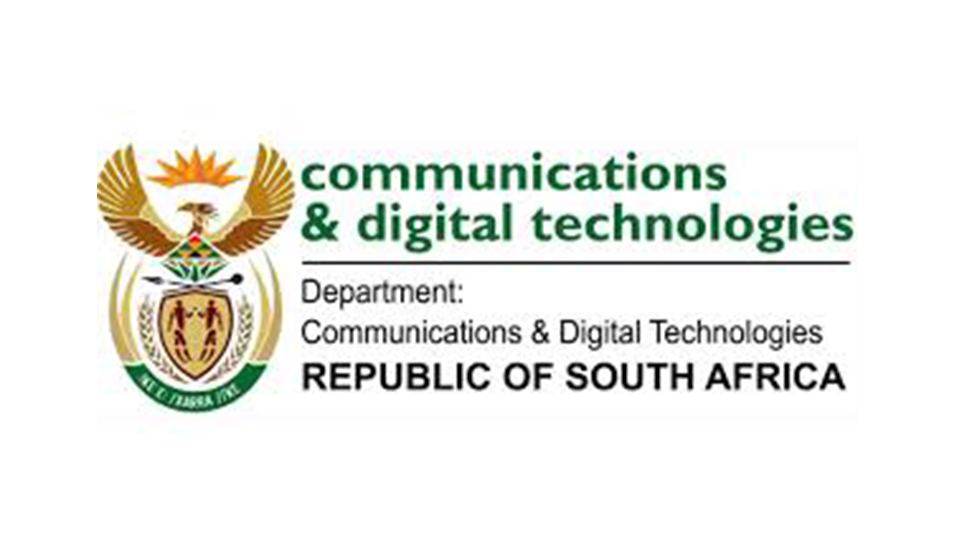
After the May 2019 National Elections, the President pronounced the establishment of the National Department of Communications and Digital Technologies (DCDT), confirming the transfer of administration, powers and functions entrusted by legislation to the Minister of Communication.
The departmental mandate sets out to lead South Africa’s digital transformation to achieve digital inclusion that must result in economic growth through creating an enabling policy and regulatory environment.
DCDT plays a specific role in fostering broader economic and social participation by all citizens through digital transformation underpinned by the Fourth Industrial Revolution (4IR). The Department will focus on creating a South Africa where citizens can enjoy greater economic and social prosperity and comfort, enjoy higher levels of health, wellbeing and safety through levering the 4IR. The benefits that come with the adoption of these advanced 4IR technologies bring both economic and social advantages and benefits, transforming how we relate as individuals, groups, and organizations across the globe.
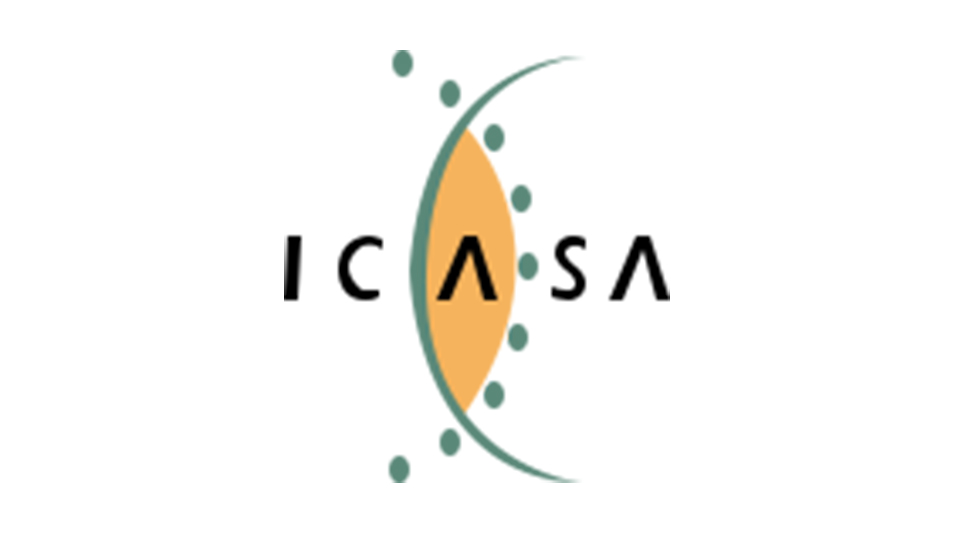
The Independent Communications Authority of South Africa (ICASA) is the official regulator of the South African communications, broadcasting and postal services sectors.
ICASA develops regulations for these sectors, issue licences to telecommunications and broadcasting service providers, monitors licensee compliance with rules and regulations, plans and managess the radio frequency spectrum, and protect consumers against unfair business practices and poor-quality services.
ICASA aims to ensure that all people in South Africa have access to basic communication services at affordable prices. In terms licence agreements, operators have to roll out services in under-serviced areas and we ensure that licensees contribute to the Universal Service and Access Fund.
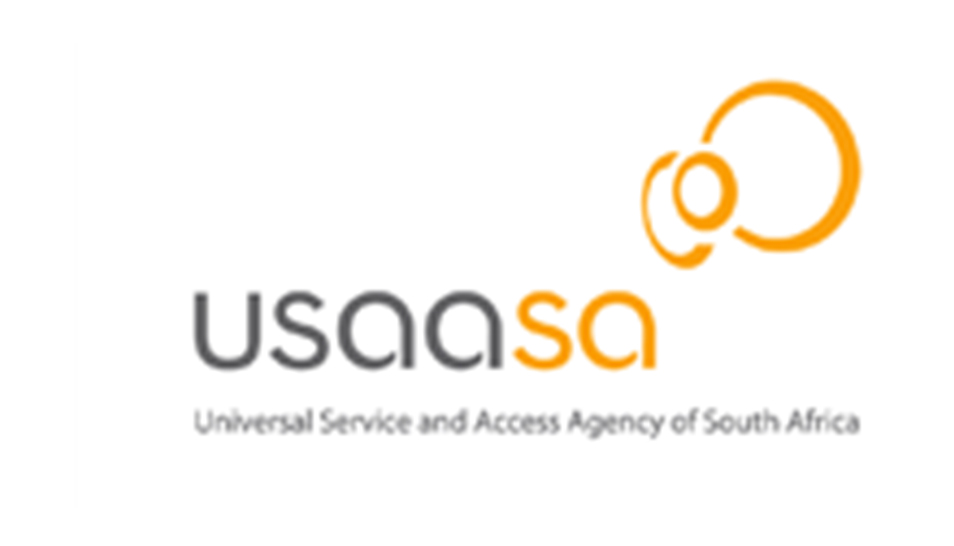
USAASA is empowered by the ECA to promote the goal of universal access and universal service. They encourage, facilitate and offer guidance in respect of any scheme to provide universal and access, universal services or telecommunication services.
